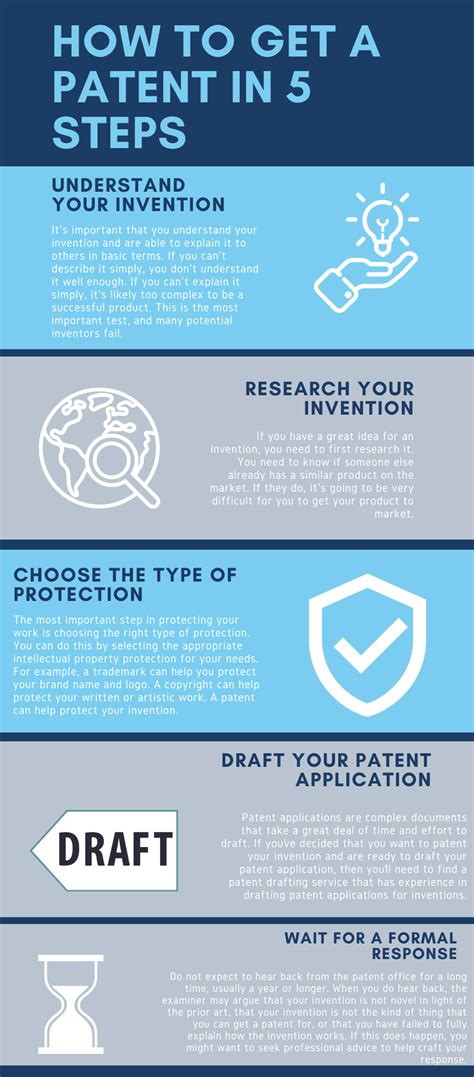How To Get A Patent: A Comprehensive Guide
Securing a patent can seem daunting, but understanding the process can significantly increase your chances of success. This guide breaks down the steps involved in obtaining a patent, offering insights to navigate the complexities and protect your valuable invention.
What is a Patent?
A patent is a legally granted exclusive right granted to an inventor, allowing them to exclude others from making, using, or selling their invention for a specific period. This protection encourages innovation by rewarding inventors for their creativity and hard work. There are several types of patents, each with its own requirements and limitations:
- Utility Patents: These protect the functionality of an invention, such as a new machine, process, or improvement thereof. They're the most common type of patent.
- Design Patents: These protect the ornamental design of an article of manufacture. Think of the unique shape of a chair or the aesthetic design of a smartphone.
- Plant Patents: These are for new and distinct, invented or discovered asexually reproduced plants.
Steps to Getting a Patent
The process of obtaining a patent is multifaceted and often requires professional assistance. Here's a breakdown of the key steps:
1. Determine Patentability
Before investing significant time and resources, it's crucial to determine if your invention is actually patentable. Key criteria include:
- Novelty: Your invention must be new and not previously known or used by others.
- Utility: It must have a useful purpose.
- Non-obviousness: The invention must not be obvious to someone skilled in the relevant field.
A preliminary patent search is highly recommended. While a professional patent search provides more comprehensive results, you can start with online resources like Google Patents to get a general idea.
2. Prepare a Patent Application
This is arguably the most critical step. A well-prepared application significantly improves your chances of approval. Key components include:
- Specification: A detailed description of your invention, including its structure, operation, and how it works. This needs to be clear and concise, leaving no room for ambiguity.
- Claims: These define the scope of your invention and what you're seeking protection for. They're the most crucial part of your application, as they determine the breadth of your patent rights. Crafting strong claims requires careful consideration and often professional expertise.
- Drawings: Detailed drawings are often necessary to illustrate your invention, especially for complex inventions.
3. File Your Patent Application
Once your application is prepared, it must be filed with the appropriate patent office. In the United States, this is the United States Patent and Trademark Office (USPTO). Filing electronically is generally preferred for efficiency.
4. Patent Prosecution
After filing, the patent office will review your application. This often involves back-and-forth communication with a patent examiner, addressing any objections or requests for further information. This stage can be lengthy and complex, potentially requiring amendments to your application.
5. Allowance and Issuance
If the patent office approves your application, your patent will be granted. This marks the beginning of your exclusive patent rights, which are typically valid for a limited period (e.g., 20 years from the date of application for utility patents).
Should You Hire a Patent Attorney?
While it's possible to navigate the patent process independently, strongly consider hiring a patent attorney or agent. They possess the necessary expertise to significantly increase your chances of success, handle complex issues, and protect your interests.
Keywords for SEO:
patent, how to get a patent, patent application, patent process, utility patent, design patent, plant patent, patentability, patent attorney, USPTO, patent search, patent claims, patent specification, patent drawings, invention, intellectual property
This comprehensive guide provides a solid foundation for understanding the patent process. Remember, seeking professional advice is crucial for maximizing your chances of successfully obtaining a patent and protecting your invention.
